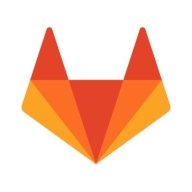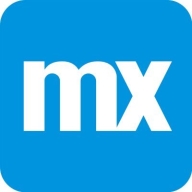

Mendix and GitLab are competitors in the software development tools category. Mendix has the upper hand in rapid application development due to its model-driven approach, while GitLab excels in CI/CD pipeline management and version control.
Features: Mendix prioritizes rapid application development, offering a model-driven platform that cuts down on development time. Its integration capabilities with standards like SOAP, REST, and OData make it highly adaptable. Additionally, Mendix provides comprehensive deployment options, including cloud and on-premises environments. GitLab focuses on outstanding CI/CD pipeline management and version control. Its platform supports effective collaboration and enhances team productivity, offering a robust interface for code reviews and merge requests.
Room for Improvement: Mendix could expand its support for non-relational databases and improve document template options. It should also enhance its UX/UI design capabilities and integration with legacy systems. GitLab needs better AWS integration and more extensive support for project management tools, such as Jira. Enhancements in CI/CD pipeline automation and security features would also be beneficial.
Ease of Deployment and Customer Service: Mendix offers diverse deployment environments, including on-premises, hybrid, and cloud solutions. It has an active community forum and responsive support, although direct support could be faster. GitLab primarily focuses on cloud deployments but supports on-premises as well. It benefits from strong community support; however, it would benefit from more comprehensive direct customer support.
Pricing and ROI: Mendix’s pricing is often seen as high, which can be challenging for small businesses, but its capabilities can provide significant ROI by reducing development cycles. GitLab, as an open-source platform, offers competitive pricing across multiple tiers, including a free version with substantial functionality, making it accessible for smaller teams while offering value through premium features.
We have saved time significantly, reducing deployment time from four hours to five minutes per deployment.
Migrating to GitLab is bringing time-saving benefits, and everything is easier to automate.
I have had meetings where they taught me, explained things, and provided guidance for starting from scratch.
I have interacted with architects for some advice during the implementation, and they were prompt in their response.
We have rarely needed to escalate issues to technical support since GitLab usually runs seamlessly.
I haven't often needed to seek direct support from Mendix teams as their online resources and knowledge database are comprehensive.
Mendix provides proper support, troubleshooting options, and a helping community.
It has all the features required for our coding and deployment needs, which makes it scalable to our changing requirements.
We're transitioning to OpenShift for future scalability with increased user numbers.
Mendix provides options for handling scalability and maintainability through features like validation, workflow and nanoflow minimization, and user components, enabling projects to be easily managed and scaled.
Mendix supports scaling well with its comprehensive online documentation and learning paths.
I have not encountered any performance or stability issues with GitLab so far.
It would be beneficial to have a user-friendly interface for setting up these configurations, instead of just writing YAML files.
GitLab can improve its user interface to make conflict resolution more user-friendly.
Roadmaps and Gantt charts in GitLab are not as advanced as in Jira, and changing start and end dates is more laborious in GitLab.
It is not one hundred percent stable.
Even when working in other small organizations, we opted for GitLab as it was cost-efficient.
The pricing of GitLab is reasonable, aligning with what I consider to be average compared to competitors.
The price is high, and it limits user accessibility.
The Ultimate version offers enhanced features for security scanning through DAST and SAST analysis, which have greatly benefitted our project workflow.
As we implement automated testing and DevSecOps, it speeds up the process by forty to sixty percent.
The feature I appreciate the most about GitLab is its ease of use and compatibility, which allows for straightforward building and deployment processes.
Mendix provides the ability to create solutions that fill gaps that I would otherwise be unable to address with standard software.
The solution is beneficial for integration with existing systems due to features like AI integration, SOAP integration, REST API integration, and various other options.


GitLab is a complete DevOps platform that enables teams to collaborate and deliver software faster.
It provides a single application for the entire DevOps lifecycle, from planning and development to testing, deployment, and monitoring.
With GitLab, teams can streamline their workflows, automate processes, and improve productivity.
Mendix is a low-code application development platform that helps your organization accelerate its application development lifecycle. The solution is designed to enable you to create software faster by abstracting and automating the development process for better business outcomes at speed and scale. Mendix has many key capabilities, including a tailored IDE for every developer, built-in collaboration tools for team development, feedback management, agile project management, the ability to build a truly responsive design across devices, and much more.
Mendix Features
Mendix has many valuable key features. Some of the most useful ones include:
Mendix Benefits
There are many benefits to implementing Mendix. Some of the biggest advantages the solution offers include:
Reviews from Real Users
Below are some reviews and helpful feedback written by PeerSpot users currently using the Mendix solution.
PeerSpot user Somnath G., Solution Architect and LowCode Practice Lead at a tech services company, says, "What I found most valuable in Mendix is that it's very much suitable for mobile apps such as native Android or IOS supported mobile apps. The multiple features of the platform are very, very attractive and very popular. Mendix has technical features such as microflows and nanoflows. You can also access data models in the platform. These are the features that are very, very strong in Mendix. I got my hands dirty on other low-code platforms, but I have not seen such strong features in them compared to the microflows, nanoflows, and data model access that are in Mendix, including creating and integration. The platform has out-of-the-box adapters or out-of-the-box-connectors that you can integrate with different interface applications such as SAP, Salesforce, Oracle EBS, etc."
Sameer V., Consulting Manager at Deloitte, mentions, “Their native mobile capability is very good. In general, the way they launch the product has been great. Their product launching strategy is far better than any other platform. I work in OutSystems and Mendix. They tend to be more on the legacy side, OutSystems. With this solution, the product launching strategy is very, very agile. I really like when they roll out their updates, which are very, very frequent.”
Robert B., Solutions Architect at a computer software company, explains, The solution is just very quick and responsive. The initial setup is very straightforward, and those implementing the product do not have to be very technologically advanced in order to manage the process.”
We monitor all Rapid Application Development Software reviews to prevent fraudulent reviews and keep review quality high. We do not post reviews by company employees or direct competitors. We validate each review for authenticity via cross-reference with LinkedIn, and personal follow-up with the reviewer when necessary.